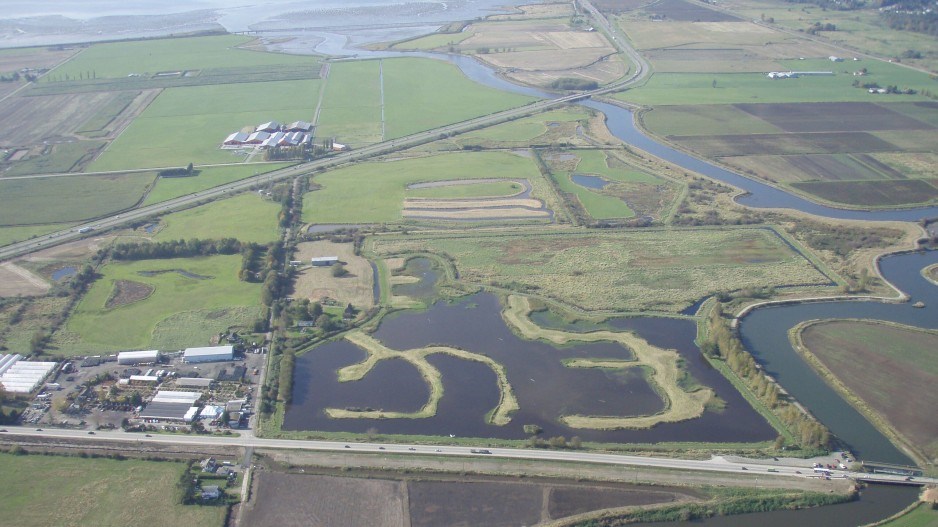Wetlands have always been valued for the habitat they provide for birds, fish, frogs and insects, as well as natural water filters.
But in an era of climate change and increasing extreme weather events, they are becoming increasingly important natural safeguards against of flooding.
Flooding in November that left large parts of Abbotsford under water have underscored the need for improved flood protection, including restoring and enhancing wetlands.
In and around urban areas, wetlands have been lost to development. Ducks Unlimited estimates 70% of the wetlands in settled areas of Canada have been lost or degraded.
Recognizing the impact development can have on wetlands, Orion Construction recently made a $20,000 donation for enhancements to Serpentine Fen in Surrey.
“We saw it first-hand last year, with the floods in Sumas Prairie,” said Joshua Gaglardi, principal at Orion Construction.
“Our businesses were severely affected, as were many others, so we’re very cognizant of the effect of construction in our local region and that we have to help where we can to contribute to mitigate the effects of climate change and flooding and disturbing the local ecology.”
Insurance companies are also now stepping up.
Sixteen Canadian insurance are contributing to a major effort led by Ducks Unlimited, called The Nature Force project, which aims to identify where wetlands protection and enhancement can play a role in flood-mitigation in the most flood-prone areas of Canada. One of the project areas identified for study and research is the Fraser River Delta.
“There is a realization that wetlands do a lot of the things that insurance companies are looking for, for protecting communities,” said Eric Balke, conservation program specialist for Ducks Unlimited. “Wetlands are really critical for flood control – for water storage, flow moderation, stabilization of flows.”
A lot of research and consultation will take place before any major enhancement projects are sanctioned.
“We want to work with folks to identify what are the data collection and research needs for figuring out what projects should go where,” Balke said. “We want this to be a data driven, science-driven approach.
“One example of a current project that Nature Force may get into is called the Sturgeon Bank Sediment Enhancement Pilot project.”
Sediment dredged from the Fraser River will be used to restore tidal marsh in the Sturgeon Banks in Richmond at the mouth of the Fraser River. The project is receiving funding from various levels of government, the Tsawwassen First Nation and Vancouver Fraser Port Authority.
“We’re going to deposit the sediment in an effort to restore tidal marsh that’s died off there,” Balke said.
While that project is mainly aimed at restoring salmon habitat, it also can also help reduce coastal flooding, Balke said.
“One of the nice things with these tidal marshes outside the west coast of Lulu Island is these tidal marshes actually attenuate wave energy,” Balke said. “So they will slow down water, reduce wave height and promote the buildup of sediment.”




